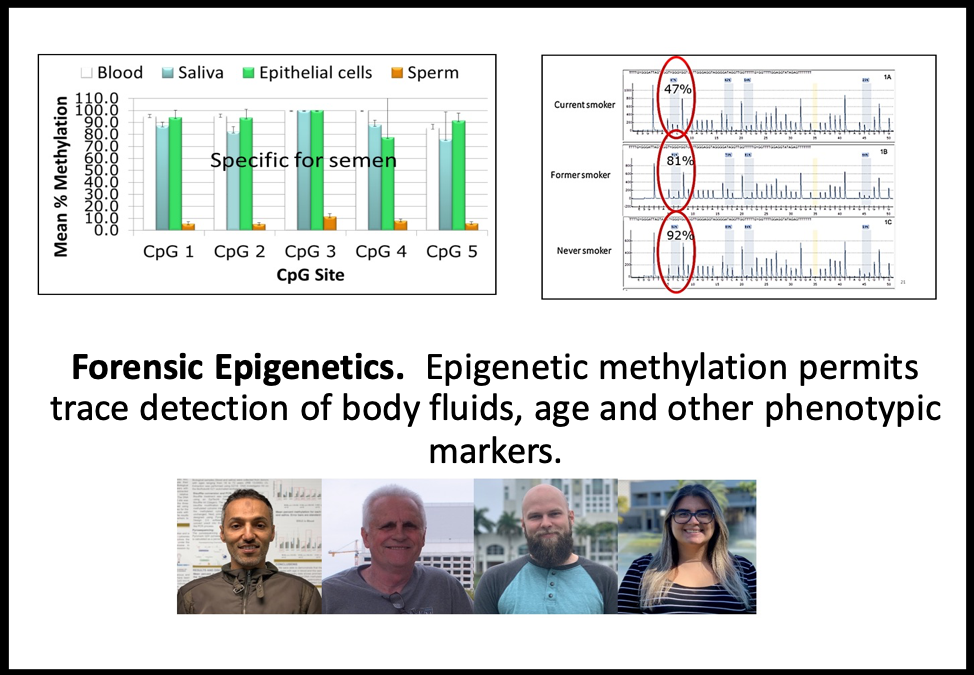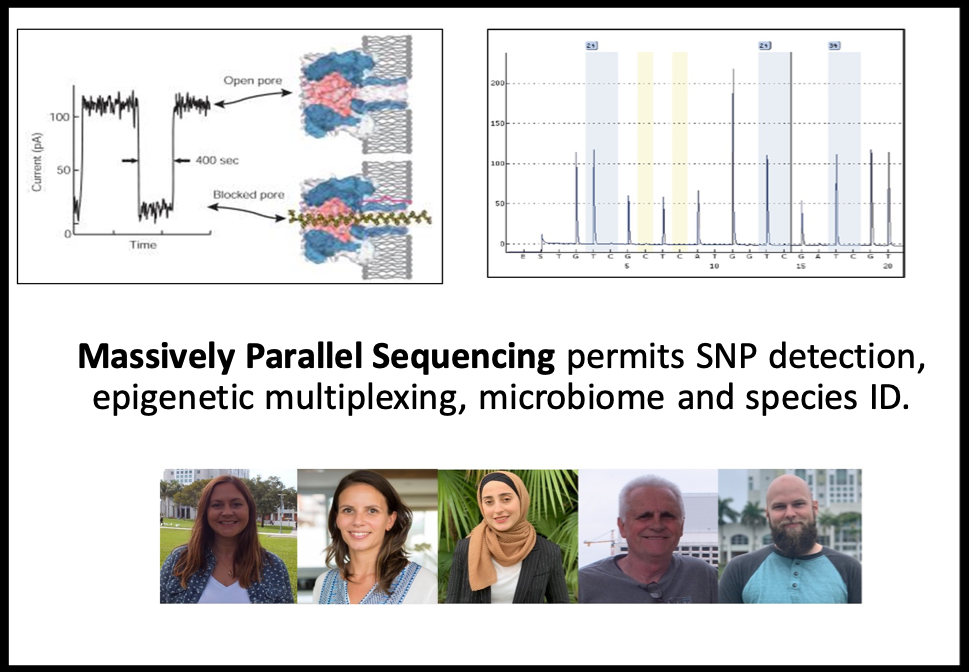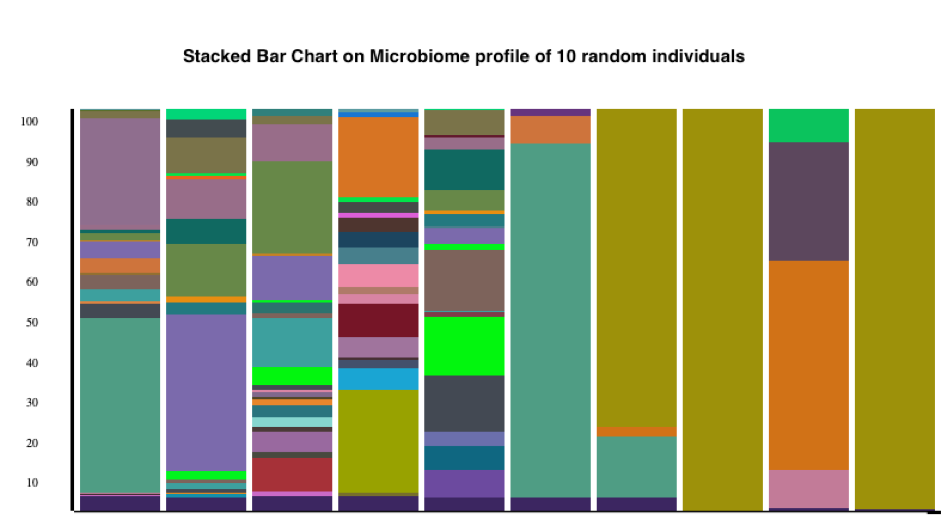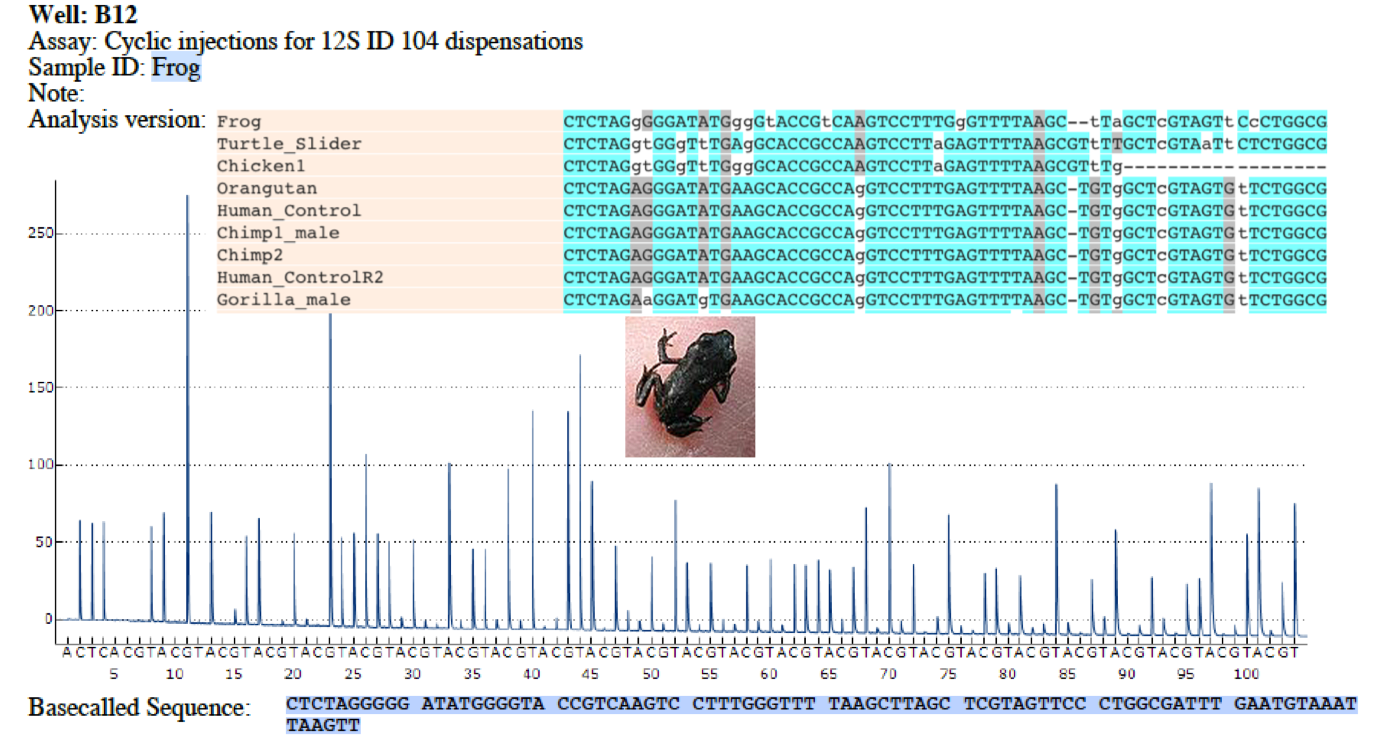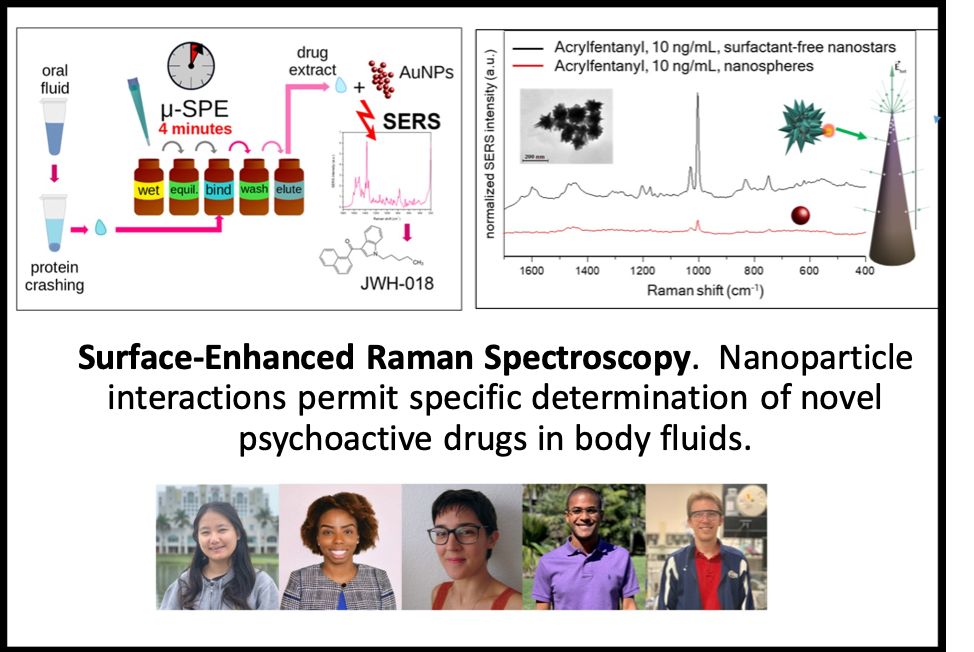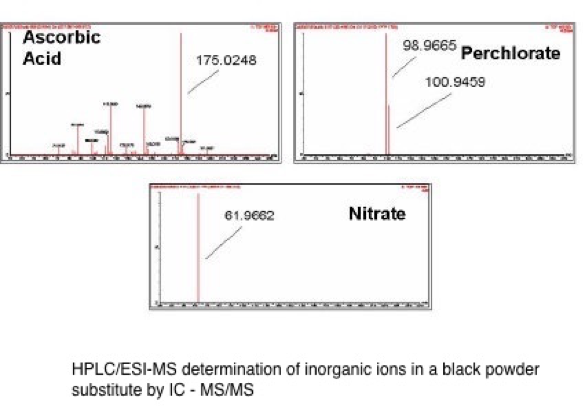Smokeless powders consist of nitrocellulose with a number of additives included to adjust burn rate and improve stability. These include energetic materials such as nitroglycerin and dinitrotoluene, as well as compounds such as diphenyl amine, centralite, and phthalates. These materials make up the additive package of the smokeless powder and can be used to speciate different types of powders In addition each powder has a different morphology, depending on manufacturer or desired burn rate. As the powder ages, the ratio of these components changes due to decomposition of the nitrocelluose. Stabilizers such as diphenyl amine are converted to nitro and nitrosodiphenylamine during this process. In the laboratory, we extract the additive package of the powder with methylene chloride and other solvents and compare the composition between different powders using HPLC, capillary electrophoresis and mass spectrometry. By examining the ratio of different additives we can determine differences between manufacturers and observe lot to lot variations.
Related to smokeless powder analysis is the determination of gunshot residue. Gunshot residue is deposited on the hands of a shooter following the discharge of a weapon. Typically following a crime a suspects hands and clothing may be collected and checked for deposits of metals from the bullet and primer including lead barium and antimony. Recently a number of lead free primers have been produced to reduce contamination of indooor shooting ranges. As a result we have been investigating the use of organic gunshot residue that results from the expulsion of burned and partially burned powder. We use ultra high performance liquid chromatography coupled to multidimensional MS.
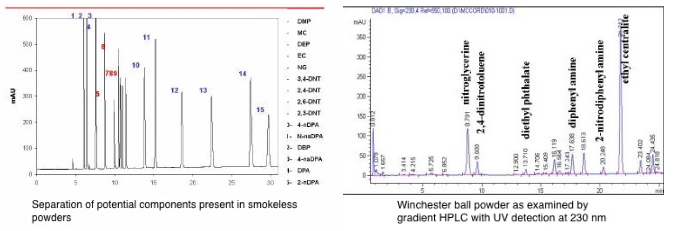
Thomas J.L.; Lincoln, D.; McCord, BR., Separation and Detection of Smokeless Powder Additives by Ultra-high Performance Liquid Chromatography with Tandem Mass Spectrometry (UPLC/MS/MS), J. Forensic Sci. 2013, 58(3) 609–615
DePerre, C.; Corbin, I.;Blas, M. ;McCord,B. Separation and Identification of Smokeless Gunpowder Additives by Capillary Electrochromatography, J. Chrom. A, 2012, 1267, 259-265.
Mathis, J.; McCord, B. Mobile phase influence on electrospray ionization for the analysis of smokeless powders by gradient reversed phase liquid chromatorgraphy-EIMS, Forensic Science International, 2005, 154, 159-166
